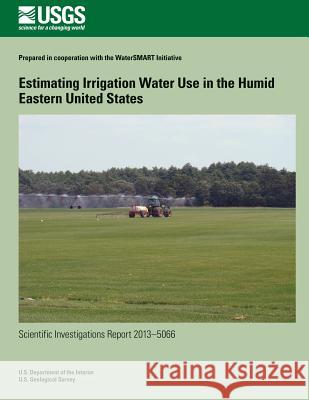Estimating Irrigation Water Use in the Humid Eastern United States » książka
Estimating Irrigation Water Use in the Humid Eastern United States
ISBN-13: 9781500275471 / Angielski / Miękka / 2014 / 42 str.
Accurate accounting of irrigation water use is an important part of the U.S. Geological Survey National Water-Use Information Program and the WaterSMART initiative to help maintain sustainable water resources in the Nation. Irrigation water use in the humid eastern United States is not well characterized because of inadequate reporting and wide variability associated with climate, soils, crops, and farming practices. To better understand irrigation water use in the eastern United States, two types of predictive models were developed and compared by using metered irrigation water-use data for corn, cotton, peanut, and soybean crops in Georgia and turf farms in Rhode Island. Reliable metered irrigation data were limited to these areas. The first predictive model that was developed uses logistic regression to predict the occurrence of irrigation on the basis of antecedent climate conditions. Logistic regression equations were developed for corn, cotton, peanut, and soybean crops by using weekly irrigation water-use data from 36 metered sites in Georgia in 2009 and 2010 and turf farms in Rhode Island from 2000 to 2004. For the weeks when irrigation was predicted to take place, the irrigation water-use volume was estimated by multiplying the average metered irrigation application rate by the irrigated acreage for a given crop. The second predictive model that was developed is a crop-water-demand model that uses a daily soil water balance to estimate the water needs of a crop on a given day based on climate, soil, and plant properties. Crop-water-demand models were developed independently of reported irrigation water-use practices and relied on knowledge of plant properties that are available in the literature. Both modeling approaches require accurate accounting of irrigated area and crop type to estimate total irrigation water use.
Zawartość książki może nie spełniać oczekiwań – reklamacje nie obejmują treści, która mogła nie być redakcyjnie ani merytorycznie opracowana.











